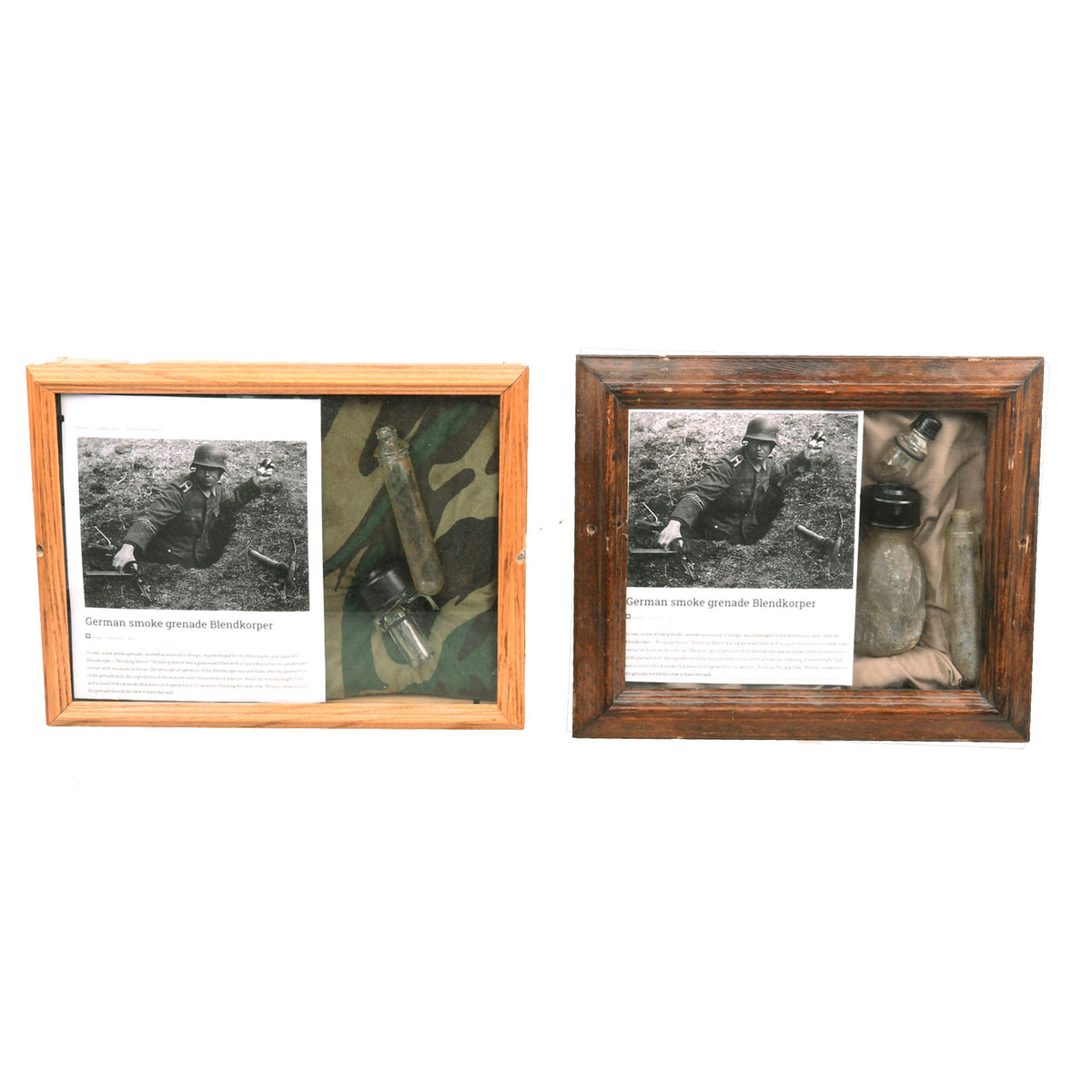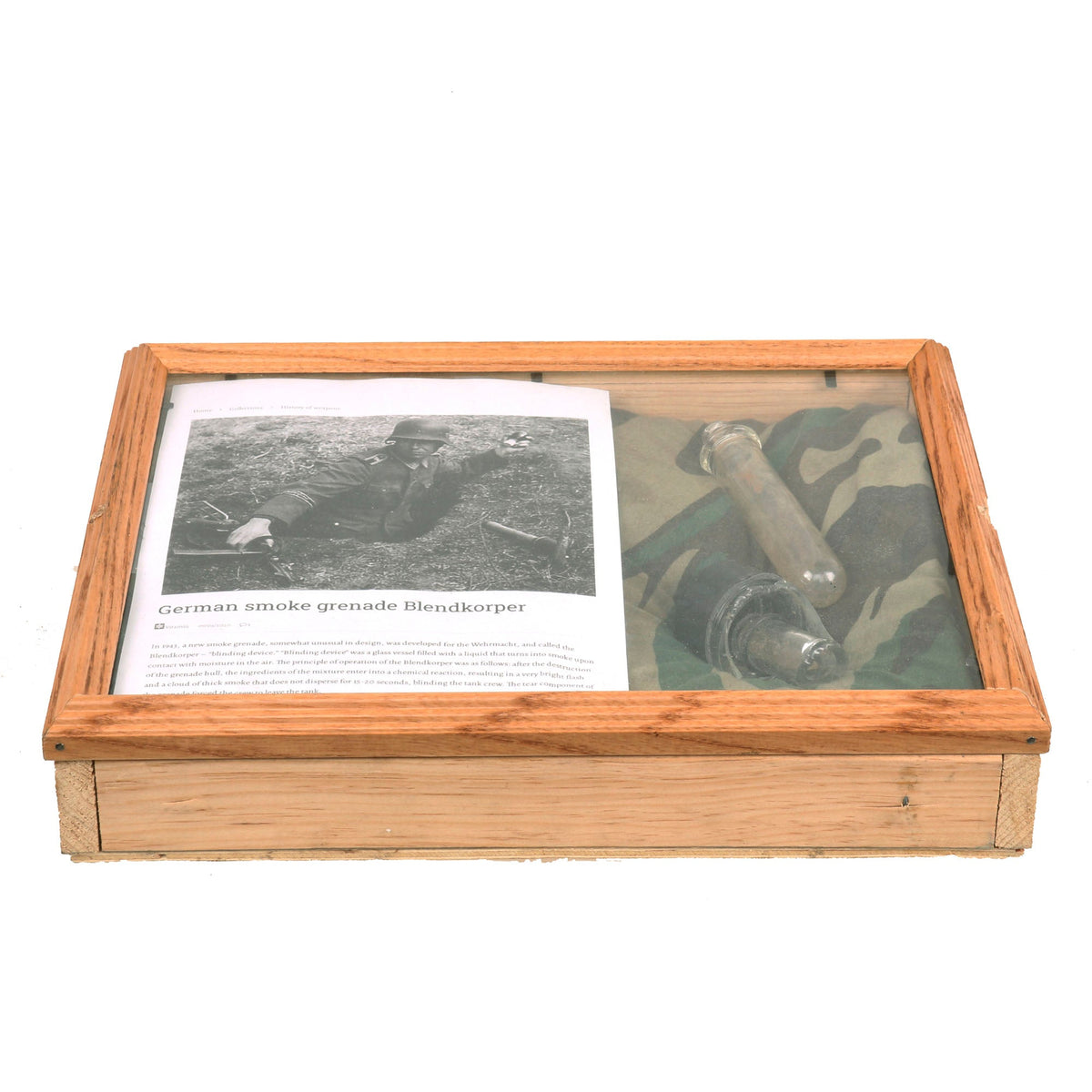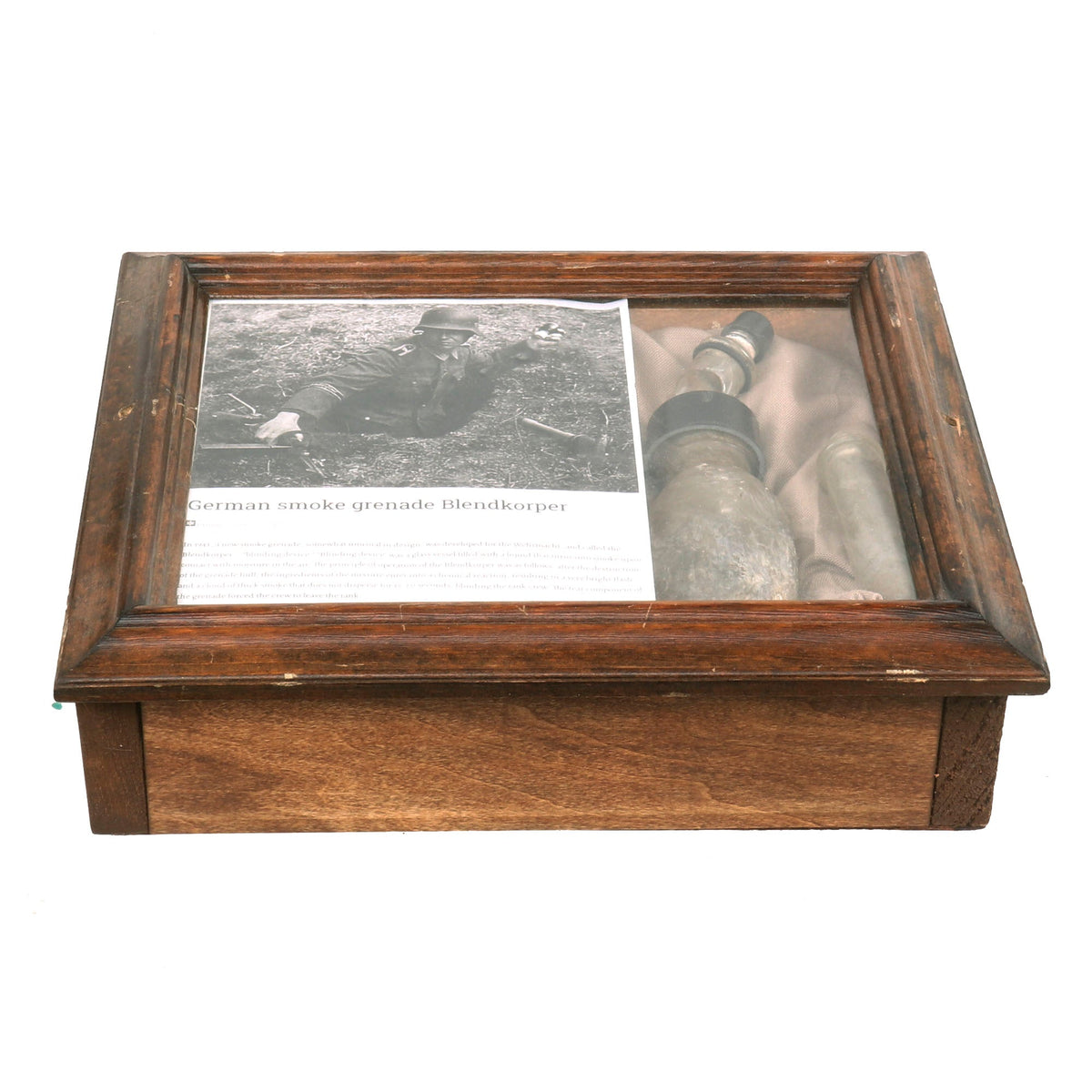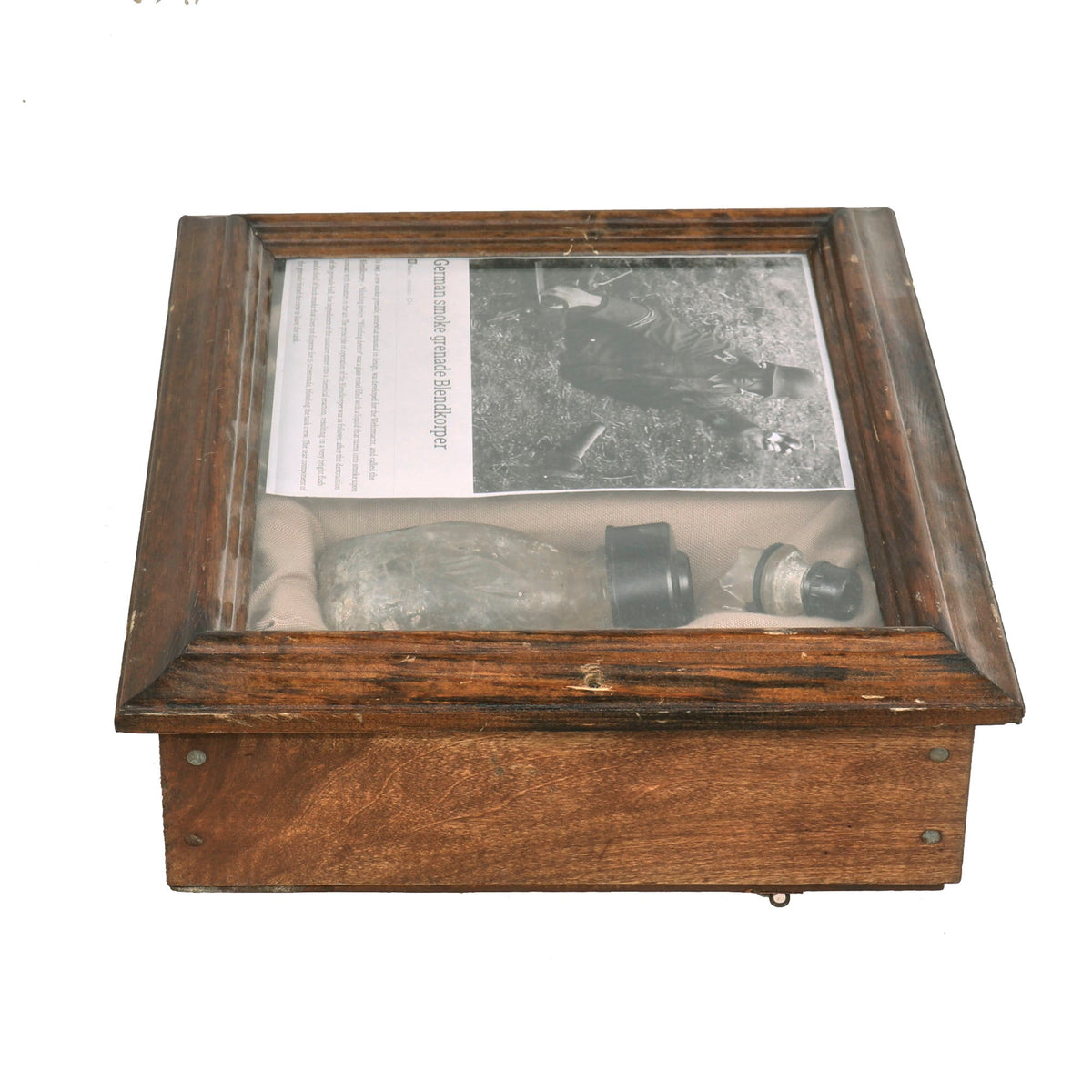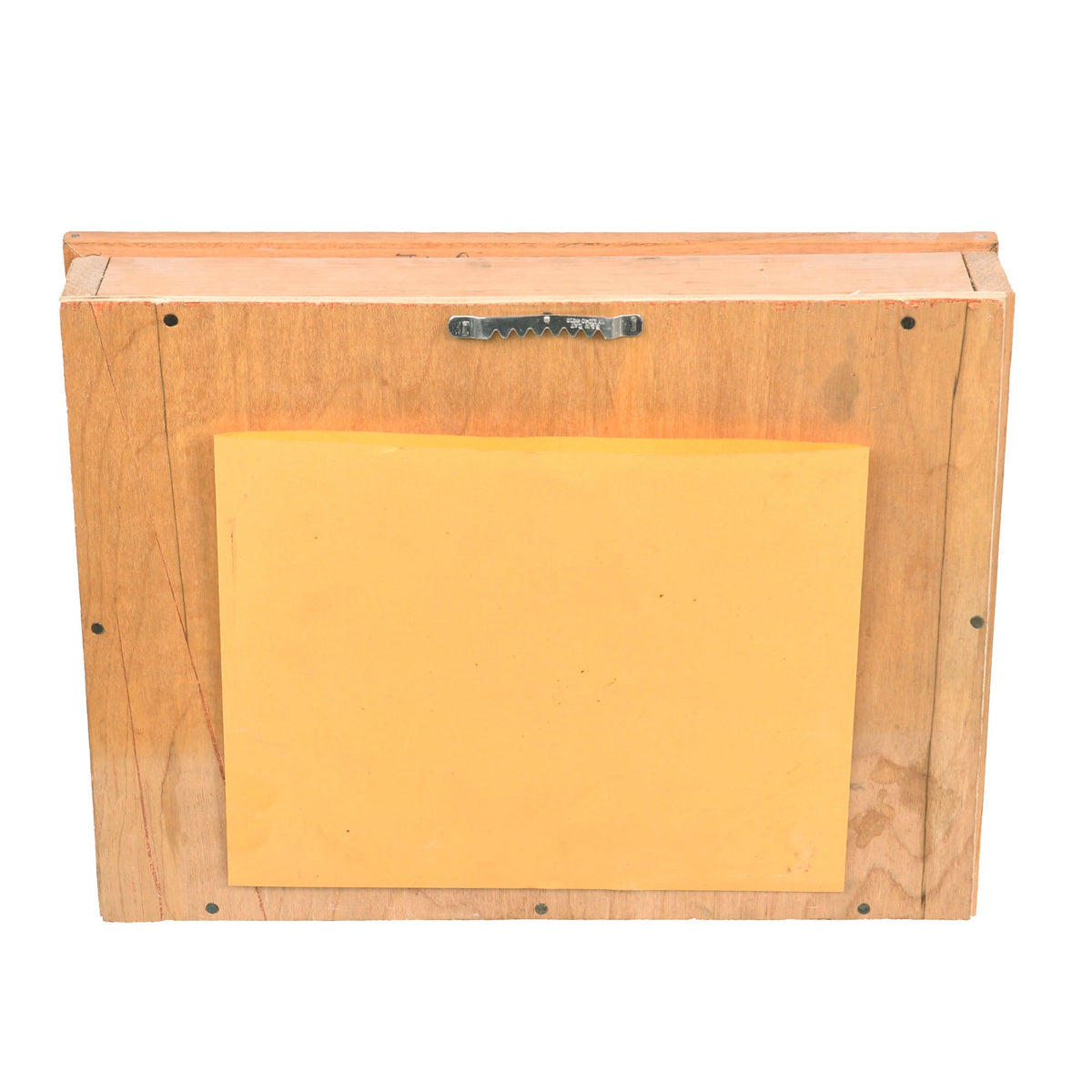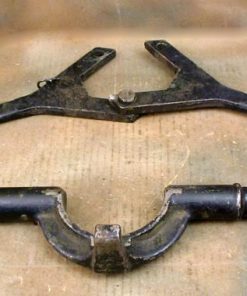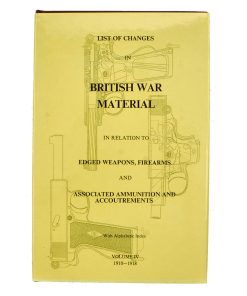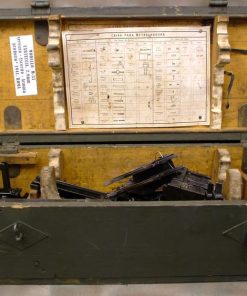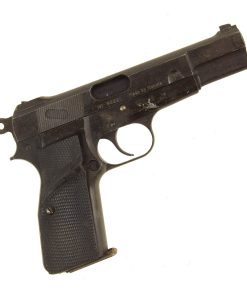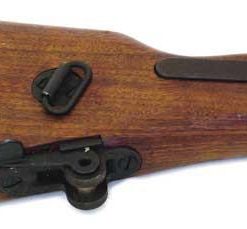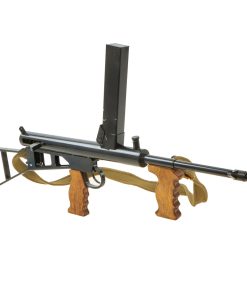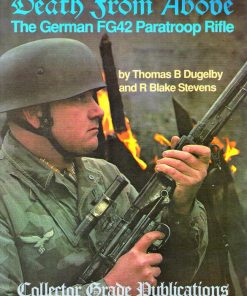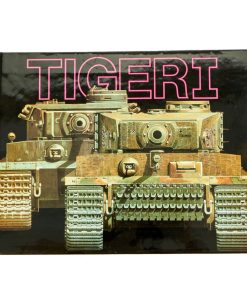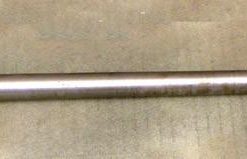Original German WWII Inert BK-2H Blendkörper Frangible Chemical Smoke Glass Grenade Pieces in Cases Original Items
$ 550,00 $ 165,00
Original Item: Only One Available. This is an incredibly rare set of pieces of the second model Blendkörper (Blinding Device) BK-2H, introduced in 1943 as an anti tank weapon. It consists of a heavy glass bottle with a smaller glass vial nested inside. The dual bottle arrangement kept two chemical solutions separated. As with all deactivated ordnance, this is Not Available for Export.
This set includes two separate wooden glass-top cases, measuring 12½ x 10½ x 3½” and 13¼ x 10¼ x 3¼”. The first case contains one very cloudy shell body with the cap, one separate interior tube, and the interior cap for another body. The second case contains one interior tube and one broken-off cap for a body. Both cases are lined with fabric to keep the pieces from breaking, with a small printed blurb about the grenades in each.
The Blendkörper were thrown against tanks, smashing the glass containers allowing the chemicals to mix creating a spontaneous volatile reaction. Target areas were hatches, air vents or other openings leading to the main crew compartment. The caustic smoking mixture would penetrate to the interior of the tank incapacitating the crew, forcing them to abandon their vehicle.
Despite appearing to be a bizarre weapon, the Blendkörper were rather common in use. Over 5 million BK-2H were produced and practically all were used up by the end of the war.
This is a great set of pieces ready for further research and display!
Construction:
The cap is made of Bakelite and is fully intact. There is a cork type ring on the smaller glass vial which seals the larger glass bottle when the Bakelite cap (broken)
is screwed tight. There is a smaller octagonal bakelite cap one the inner glass tube. The cork seal on the small vial is also often missing just like in this example.
The Blendkörper used a two bottle mechanism for releasing its caustic chemicals. The inside bottle contained 36 grams of an aqueous solution of calcium chloride while the outer bottle contained 270 grams of titanium tetrachloride. When mixed, the otherwise red solution would generate clouds of thick white smoke. Ideally, the grenade was smashed against the ventilation system of an enemy tank and thus the smoke would force the crew to abandon the vehicle. However, in practice the crew of a tank was often able to drive away from the limited area affected before too much smoke entered the fighting compartment.
The BK-2H weighed about 400 grams while having a total length of 128mm To seal the weapon, the BK-2H used a sulfur and cement plug, though some later variations have been found to have a plug made of bakelite. Distribution of the BK-2H was handled via the use of a specialized cardboard box with separate compartments per grenade. A total of four could be stored in each box with a notice describing their use being placed on the front of the box.
This also contained the other use for the BK-2H which was to act as a smoke grenade to supplement larger screens.
Fast Shipping with Professional Packaging
Thanks to our longstanding association with UPS FedEx DHL, and other major international carriers, we are able to provide a range of shipping options. Our warehouse staff is expertly trained and will wrap your products according to our exact and precise specifications. Prior to shipping, your goods will be thoroughly examined and securely secured. We ship to thousands clients each day across multiple countries. This shows how we're dedicated to be the largest retailer on the internet. Warehouses and distribution centres can be located throughout Europe as well as the USA.
Note: Orders with more than one item will be assigned a processing date depending on the item.
Before shipping before shipping, we'll conduct a thorough inspection of the items you have ordered. Today, the majority of orders will be delivered within 48 hours. The delivery time will be between 3-7 days.
Returns
The stock is dynamic and we cannot completely manage it because multiple stakeholders are involved, including our factory and warehouse. So the actual stock may alter at any time. It's possible that you may not receive your order once the order has been made.
Our policy is valid for a period of 30 days. If you don't receive the product within 30 days, we are not able to issue a refund or an exchange.
You can only return an item if it is unused and in the same state as the day you received it. You must have the item in its original packaging.
Related products
Uncategorized
Uncategorized
Uncategorized
Uncategorized
Uncategorized
Australian WWII Owen MK1 Machine Carbine SMG Custom Fabricated Replica with Sling Original Items
Uncategorized
Band of Brothers ORIGINAL GERMAN WWII Le. F.H. 18 10.5cm ARTILLERY PIECE Original Items
Uncategorized
Uncategorized
Uncategorized
Uncategorized
Uncategorized
Uncategorized
Uncategorized
